Perfect vision is a blessing bestowed upon mankind by mother nature. While many people enjoy this gift without any problems, there are many others who are not so lucky. Many people wear glasses to obtain normal vision. But it can be a source of discomfort for many people. New users may experience a constant irritation around their nose initially when they start wearing glasses. Some people may also feel that wearing spectacles interferes with their appearance. Hence for cosmetic purpose they may want to avoid using glasses.

People may also have tendency to forget their spectacles when they go anywhere. This is another reason why spectacles prove to be a disadvantage for some. There are some newer methods and techniques which are being developed recently to provide with a more permanent ways to get relief from visual errors. LASIK is one of these methods. It is the most sought after surgical method which helps to correct visual abnormalities and help the person see clearly.
So for those unlucky few who have issues with the eye sight, let us dig deep into what to expect with LASIK surgery.
SO HERE GOES…….
The Problem:
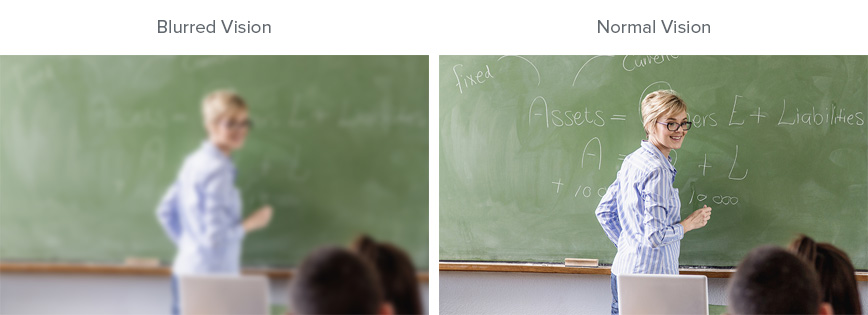
Sometimes, there is structural alteration of the eye ball which leads to the light being focused in front of the retina or behind it, rather than onto the retina. This could happen if there is elongation or flattening of the eye ball. Depending on the anomaly, a person could suffer from hypermetropia (objects at a close distance cannot be seen clearly), myopia (objects situated far off are cannot be seen clearly) or astigmatism (peripheral vision is blurred).
These are the most commonly occurring vision problems. As a result, the vision becomes hazy and things appear to be blurred. The problems are detected first by the person themselves when they start finding difficulty while reading. These problems can be diagnosed by opthalmic examination. The intensity of the error is calculated and the correction which is needed is measured in dioptres.
The Solution:
These visual errors mentioned above can be corrected by medical or surgical methods. Both these methods have been described in detail below:
Spectacles and lenses:
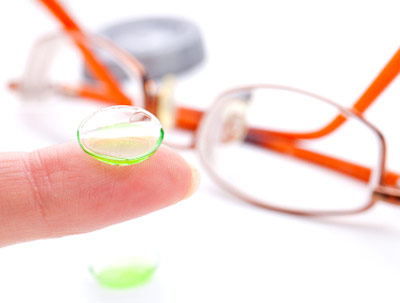
After a person is diagnosed to have one of the above mentioned visual errors, the ophthalmologist will advise them the usage of spectacles or contact lenses. The error in vision is calculated by the ophthalmologist. This helps in determining the power of contact lenses/ spectacles which will be needed to be used by the patient. Contact lenses have cosmetic importance for people who do not feel comfortable feeling spectacles all the time.
LASIK
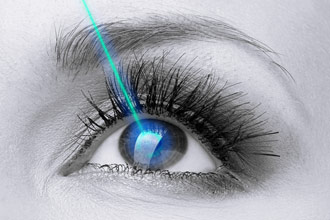
LASIK (Laser assisted in situ keratomileusis) is a relatively newer treatment method for correction of visual errors. Cornea of the affected eye is operated upon to adjust the angle of the light passing into the eye and focusing it over the retina.
Preparing for LASIK
Any surgery requires careful preparation and planning. The successful outcome of LASIK depends to quite an extent on the pre-surgical preparation. Prior to the surgery, patient will undergo a detailed eye examination. The thickness of cornea is calculated. The alteration to be made in corneal layer during surgery depends on its thickness.
Procedure
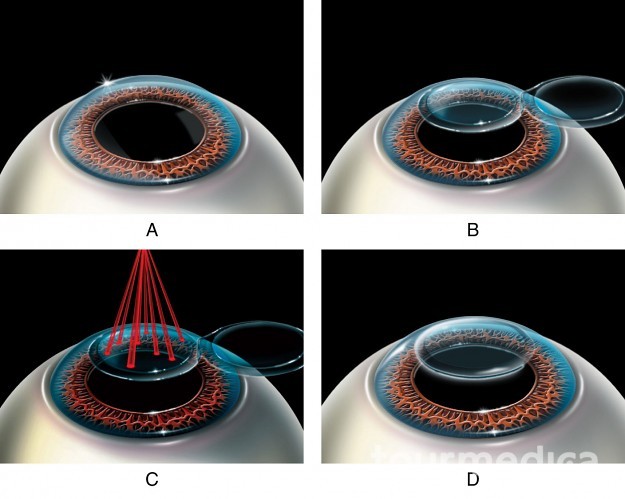
LASIK is a surgery performed on outpatient basis. Patient does not need to be admitted to the hospital before or after surgery. The procedure is as follows:
- The eye to be operated upon is made numb by administering anesthetic eye drops.
- The outer layer of cornea is sliced upon like a flap.
- Laser beams are focused on the inner layer of cornea and the corneal tissue is cut appropriately depending on the calculations done during ophthalmic examination.
- The corneal flaps are then closed.
If both the eyes are operated upon, the procedure takes about 20-25 minutes. After the surgery, it takes about 7-10 days for the surgical cuts given to the cornea to heal. For the first few hours after surgery, there will be pain and swelling of the eyes, which subsides gradually. For 3-6 weeks after surgery, the patient has to follow certain restrictions. They will help faster recovery from the surgery and will ensure perfect vision for the patient.
Post-operative care
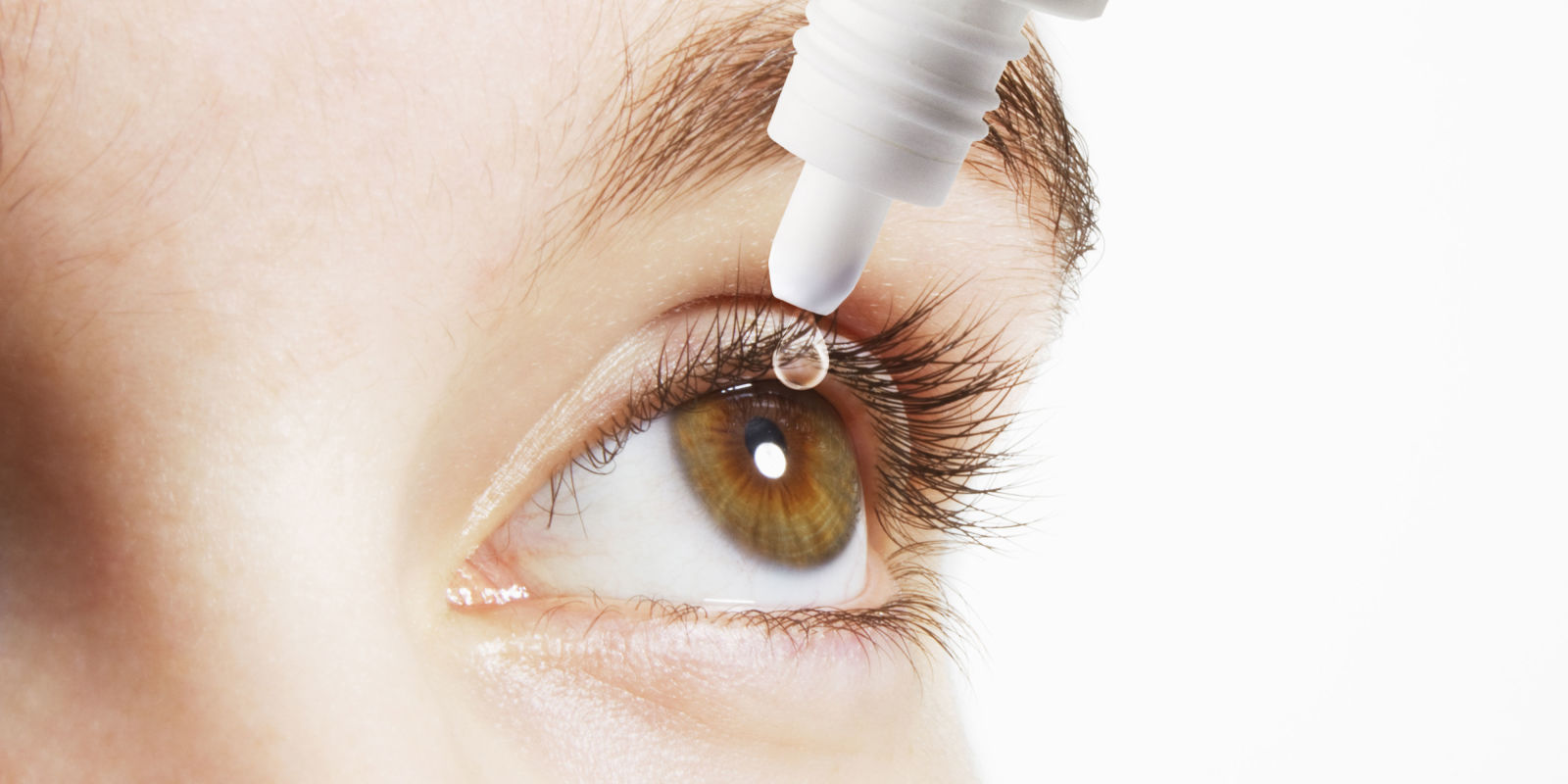
Some post-operative eye care instructions have been highlighted below:
- Eye drops: Eye drops having anti biotic properties are suggested. These are useful for keeping the eyes lubricated. They are to be used as per the doctor’s recommendations.
- Rest to the eyes: It is very important to avoid any kind of strain to the eyes for a few days after surgery. Person should avoid exposure to screen of laptops, computers, T.V. or mobile phones. Exposure to bright light is to be avoided.
- Avoiding contact with water: Till the corneal flap does not close completely, and the surgical wound is open, it is not advisable to allow water to enter the eyes. Patient should be cautious while having a bath. Head bath is to be avoided for a week after surgery.
Benefits of LASIK:

LASIK is a boon to people having the compulsion of using visual aid. Some of the benefits of this procedure have been listed below:
- Problems like hypermetropia, myopia and astigmatism can be treated completely with this process.
- It has quite a long term effect and the person does not need to use spectacles, contact lenses or any other visual aid.
- Vision becomes clear and completely normal after the procedure.
- Some people experience problems like recurrent burning and infections of eyes if they have used contact lenses for a long time. This problem gets taken care of, after LASIK.
- This procedure has cosmetic importance for people who feel awkward or uncomfortable wearing spectacles.
Disadvantages of LASIK:

Just like every other treatment procedure, LASIK also has some drawbacks which have been mentioned below:
- Possibility of failure of the procedure amounts to a small percentage or risk if there is any technical error during surgery. However, it can be corrected by repeating the procedure.
- Sometimes the surgery may be successful, but the vision may deteriorate and return to its pre-operative status.
- Other visual problems like double vision, halo of light around objects may be experienced.
- People who undergo the procedure at a young age may still encounter problems like presbyopia after 40 years of age.
- Sometimes the corneal flap fails to close properly after surgery.
With all its pros and cons, LASIK is still a very popular procedure having high success rate. Its advantages easily overlook the disadvantages. So bid adieu to the troublesome glasses and get back your normal vision with help of LASIK surgery.